Edad Media (711-1512)
La primera referencia documental de Larraga data de 1052, con motivo de la donación del rey García a Santa María de Nájera del monasterio de Berbinzana, inscrito en el término de Larraga. Entre 1153 y 1158 Larraga fue incorporada a la dote castellana de la reina Urraca. Esto provocó que fuera arrasada en 1156 por Sancho el Sabio, causando una gran desolación en la zona.
Para recuperar el poblamiento, este mismo rey concedió a Larraga en 1193 unos nuevos fueros. Estos, junto con los de Artajona (1193), Mendigorría (1194) y Miranda de Arga (1208) posteriormente serían compilados en el Fuero de la Novenera, una de las siete familias de fueros locales de Navarra anteriores a la promulgación del Fuero General (1238). A grandes rasgos, el Fuero de la Novenera es un texto jurídico comarcal que destaca por su carácter arcaico y humanitario, exime del pago de la novena y unifica la cantidad anual de pago. La sede del tribunal se encontraba en la iglesia de San Esteban de Larraga, donde se prestaba juramento y se realizaban las ordalías, tal y como relata el investigador Fortún Pérez de Ciriza. Por esta época, finales del siglo XII comienzos del XIII, se talló el Santo Cristo del Socorro y más adelante apareció como uno de los primeros concejos de Navarra que pudo tener la jurisdicción de su propio castillo. Esto se puede ver en una carta de homenaje de 1276, en la que además está el sello céreo medieval de Larraga: un castillo de tres torres sobre un puente de cinco arcos.
En 1366, Larraga tenía 189 fuegos y se situaba entre los diez concejos más poblados de Navarra. En 1379-1389 y 1476-1479 Larraga volvió a formar parte de un protectorado castellano. En 1396 tuvo lugar un acontecimiento de gran trascendencia para la organización municipal ya que ese año se formalizó la unión de Larraga y Berbinzana. A partir de entonces, el alcalde de Larraga se convirtió en la máxima autoridad de ambos concejos y el día de San Esteban nombraba a un teniente alcalde en Berbinzana. A mediados del siglo XV comenzó la guerra civil entre agramonteses y beaumonteses y durante la contienda, en 1468, los reyes concedieron al Conde de Lerín la jurisdicción civil y criminal de la villa. Unos años después, en 1479, se la confirmaron a perpetuo junto con la baja y mediana. Sin embargo, en 1507 se la arrebataron y erigieron a Larraga en Buena Villa, en unos privilegios en los que se le concedió el asiento y voto en las Cortes de Navarra, la libertad comercial, el escudo de armas o el privilegio de feria entre otros derechos. Anteriormente, había sido sitiada por César Borgia, hijo del Papa Alejandro VI, fracasando en su intento.







